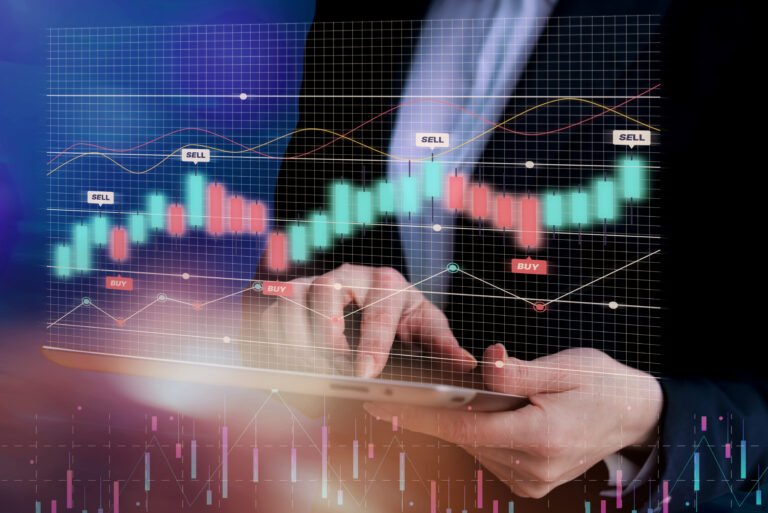Social Trading: A Modern Approach to Investing Together
Introduction to Social Trading
In the ever-evolving landscape of financial markets, social trade has emerged as a powerful and inclusive way to participate in trading. Unlike traditional trading, where every trader operates individually, social trading brings a collaborative element to investing. It allows individuals—whether new or experienced—to observe, learn from, and even automatically copy the trades of other successful traders.
This blog will take you through everything you need to know about social trade: what it is, how it works, its benefits, risks, and how to get started.

Social trade is a form of investing that allows traders to follow the strategies of other traders, share insights, and even mirror their trades in real-time. Think of it as the social media of the financial world, where instead of posting photos or updates, traders post their market actions, strategies, and insights.
The primary idea behind social trade is transparency and community-based decision-making. Platforms that offer social trading features provide detailed statistics, performance records, risk levels, and trade history of expert traders—making it easier for followers to make informed choices.
At its core, social trade revolves around copying or mirroring the trades of more experienced investors. Here’s how the typical process works:
- Create an Account on a Social Trade Platform: Choose a reputable platform that offers social trading features.
- Browse and Analyze Traders: Use filters such as performance, risk level, asset class, or trading strategy to find a trader you’d like to follow.
- Start Copy Trading: Allocate a specific amount of your capital to mirror the chosen trader’s actions automatically.
- Monitor and Adjust: You can always pause, change, or stop copying depending on your portfolio goals and market conditions.
Popular platforms like eToro, ZuluTrade, and CopyFX have made social trading accessible to traders globally.
Why Is Social Trade Gaining Popularity?
The rise of social trade can be attributed to a few key factors:
- Ease of Access: Beginners can start trading without deep technical knowledge.
- Community Learning: Traders learn by watching the decision-making process of others.
- Transparency: Most platforms display historical data, portfolio breakdowns, and risk scores.
- Diversification: Following multiple traders can spread your risk across strategies and asset classes.
Real-Time Engagement: Unlike traditional education methods, social trade lets users experience live trades and immediate outcomes.
Benefits of Social Trading
✅ Ideal for Beginners
One of the biggest advantages of social trading is that it lowers the entry barrier. Newcomers can learn from experts and see how trading decisions are made in real-time.
✅ Time-Saving
If you don’t have time to monitor charts and news all day, social trading can be a passive approach. You let others do the analysis while you focus on copying their trades.
✅ Transparency and Statistics
With access to trader profiles, performance graphs, drawdown levels, and risk metrics, you get detailed insights before choosing someone to follow.
✅ Community Support
Platforms often include forums, comment sections, or newsfeeds where traders discuss strategies and provide updates. This can enhance your learning curve.
Potential Risks of Social Trading
While social trading offers many benefits, it’s not free from risks:
- Over-Reliance on Others: Blindly copying traders without understanding their strategy can lead to poor outcomes.
- Market Risk: Even experienced traders have losing streaks. Losses can occur when markets move unexpectedly.
- Lack of Customization: Some strategies may not align with your personal financial goals or risk tolerance.
- Emotional Bias: Popular traders may attract large followings, but their strategies might not be suitable for everyone.
To mitigate risks, it’s recommended to diversify across different traders, set stop-loss limits, and monitor portfolio performance regularly.
How to Choose the Right Trader to Copy
Here are some tips to help you select the right trader on a social trading platform:
Criteria | What to Look For |
Trading History | At least 6–12 months of consistent performance |
Risk Score | Moderate, depending on your tolerance |
Strategy | Understand the trading style—scalping, swing, or long-term |
Drawdown | Lower drawdown means less risk exposure |
Engagement | Active traders who explain their moves add value |
Avoid chasing high returns blindly—focus on consistent performers with risk-managed portfolios.
Social Trading vs Copy Trading vs Mirror Trading
These terms are often used interchangeably, but there are subtle differences:
- Social Trading: Broad concept involving community discussions, shared strategies, and sometimes copying.
- Copy Trading: Automatically copying another trader’s positions in real-time.
- Mirror Trading: Following a pre-programmed trading strategy or algorithm developed by another trader.
Social trading includes both copy and mirror trading but also emphasizes interaction and community learning.
Best Practices to Succeed in Social Trading
- Start with a demo account to understand platform functionality.
- Diversify by following multiple traders with different approaches.
- Don’t invest more than you can afford to lose.
- Educate yourself alongside—social trading should supplement learning, not replace it.
Regularly review and rebalance your copied strategies.
Who Is Social Trading For?
Social trading can be a great choice for:
- Beginners looking for guidance
- Busy professionals seeking passive income
- Traders who want to test strategies by observing experts
- Investors aiming to diversify with minimal research
Whether you’re just starting or want to enhance your portfolio with diversified strategies, social trading opens a new door in online trading.
Final Thoughts
Social trading blends the power of technology, transparency, and collective knowledge. It empowers individuals to participate in global markets without needing years of training or real-time analysis experience. However, it’s essential to approach it with realistic expectations, a proper risk management plan, and a learning mindset.
By following the right experts and staying informed, social trading can be an effective part of your broader investment journey.
